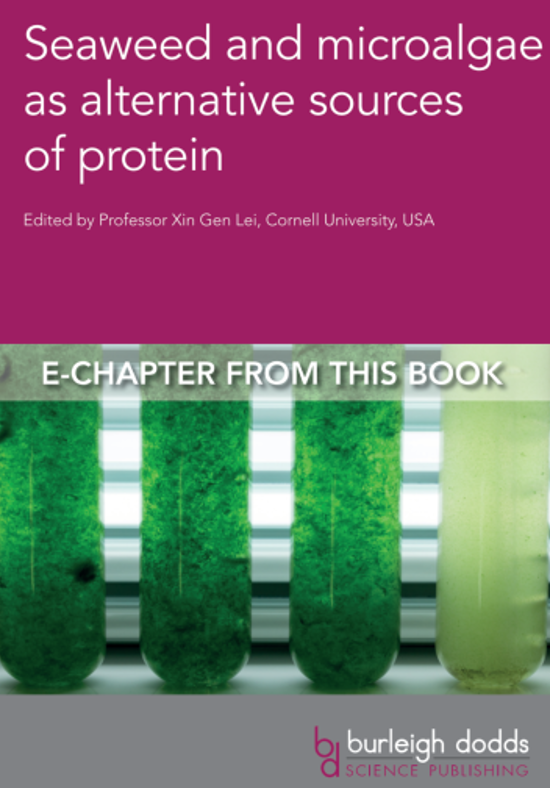This study determined effects of full-fatted (C046, 41% crude protein) and lipid extracted (LEA, 39% crude protein) microalgae Desmodesmus sp. on growth performance, gut health, and excreta hydrothermal liquefaction of broiler chickens. Two experiments were conducted by feeding day-old Cornish male chicks: 1) a corn-soybean meal basal diet (control) 2) control +5% C046, or 3) control +5% LEA for 2 weeks. Growth performance was measured weekly in both experiments. Blood, liver, and duodenum samples of chickens were collected for biochemical analyses, and excreta samples were collected for hydrothermal liquefaction (300 °C, 60 min) at the end of Experiment 2. Compared with the control, supplemental dietary C046 and LEA enhanced average daily gain (13% to 40%, p < 0.05) in both experiments, and improved feed efficiency (15% and 11%, p < 0.01) in Experiment 2. The C046 and LEA diets enhanced the duodenum (19% to –2 fold, p < 0.05), but decreased the liver (17 to 78%, p < 0.05) mRNA abundances of interleukins-1, 6 and 8 and (or) tumor necrosis factor-α, respectively, compared with the controls. Meanwhile, the two types of biomass enhanced the protein amounts of claudin-1 in the duodenum (5–34%, p < 0.05) than the controls. Hydrothermal liquefaction of the excreta derived from the three diets showed no major differences in total bio-crude oil (average of 23%), hydrochar yield (average of 12%), or elemental compositions. However, the heating values of the resultant two bio-crude oils from the microalgae-fed chicken excreta (average of 34 MJ/kg) were 16% greater than those from the control chickens (29 MJ/kg). In conclusion, supplementing the full- and de-fatted Desmodesmus sp. microalgal biomass in the starter diets for broiler chickens produced largely similar improvements of growth performance, gut health, and excreta-derived oil quality.
AUTHOR
Zackary Johnson
PI Johnson Lab
68 posts
You may also like
Today was the ceremonial breaking of the ground for the Orrin Pilkey Marine Sciences and Conservation Genetics Center. The ~10,000 square foot […]
The Pivers Island Coastal Observatory (PICO) sampled its 1000th time point today. The time-series, was started in 2010 by a Duke undergraduate […]
Dr. Zackary Johnson is named the Arthur P. Kaupe Assistant Professor of Molecular Biology. Honoring the memory of her late husband, Sandra Taylor […]
Expanding markets for microalgae and macroalgae products have led to increased development of commercial farming operations. While microalgae and macroalgae, or seaweed, […]




